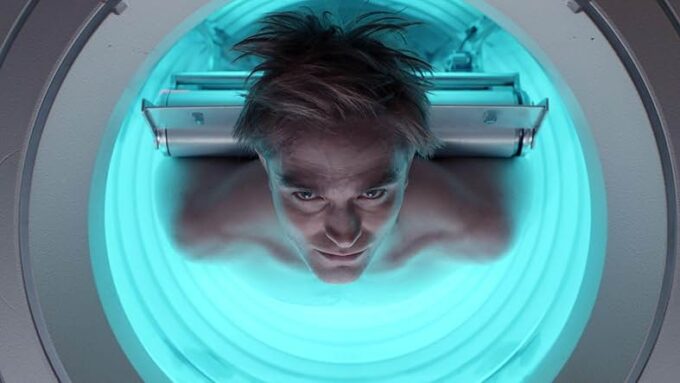
How Does the Cloning Process Work in Mickey 17 and What Are the Ethical Implications?
In Bong Joon Ho’s 2025 sci-fi film “Mickey 17,” the concept of the “Expendable” represents one of the most fascinating and disturbing technological innovations in recent science fiction. Mickey Barnes, played by Robert Pattinson, signs up as an Expendable for a space mission to the ice planet Niflheim, which essentially means he becomes a disposable worker who gets cloned each time he dies. This technology drives the film’s narrative and raises profound ethical questions about identity, consciousness, and the value of human life.
The cloning process in “Mickey 17” is presented as advanced technology that has been banned on Earth due to ethical concerns but is permitted for space colonization purposes. The process involves several key components that are established throughout the film. First, there’s a massive tank called a “cycler” that processes organic waste – everything from food scraps to human remains – and converts them into raw materials for creating new bodies. This recycling aspect adds a layer of environmental commentary to the film, suggesting that even in this advanced future, resources remain precious and must be reused.
Second, there’s a 3D printer-like device that uses these materials to construct a complete human body. When Mickey dies, his remains are fed into the cycler, and a new Mickey is printed from the processed materials. This physical recreation is depicted as being exact down to the cellular level, including any identifying marks like scars or blemishes. Interestingly, the film establishes that the scanned template is permanent—when Mickey pops a pimple before his initial scan, the medical technician warns him that any imperfections present during the scan will reappear in every subsequent clone.
Most crucially, the technology includes a memory transfer process. Mickey’s memories, personality, and experiences are regularly backed up on what’s described as a “brick”—a small storage device that contains his entire consciousness. When a new Mickey is printed, these memories are uploaded into the fresh body, creating continuity of identity despite the physical death of the previous iteration. The film specifies that these backups need to be done weekly to prevent significant memory gaps between iterations.
The ethical implications of this technology form the heart of the film’s philosophical inquiry. First and foremost is the question of identity. Is each Mickey truly the same person? The film plays with this question by introducing Mickey 17 and Mickey 18—two versions existing simultaneously due to a mission gone awry. While they share identical memories up to a point, they quickly develop different personalities and perspectives, with Mickey 18 being notably more aggressive and impulsive than his predecessor. This divergence suggests that identity is not solely determined by memories but also by ongoing experiences and choices.
The film also tackles the devaluation of human life that comes with replaceability. Throughout the story, other crew members treat Mickey with casual disdain precisely because he can be reprinted. They ask him invasive questions about what it feels like to die, assign him the most dangerous tasks without concern, and generally treat him as less than human. This societal acceptance of disposable humans echoes historical examples of dehumanization used to justify exploitation and cruelty.
The concept of consent raises another troubling ethical dimension. While Mickey initially consented to become an Expendable, the film implies he didn’t fully understand what he was signing up for. His motivation—escaping a loan shark on Earth—suggests economic coercion rather than free choice. Additionally, when Mickey dies, it’s a new clone who continues the contract, raising questions about whether one version of a person can ethically consent on behalf of future iterations of themselves.
Religious and philosophical objections to human printing are briefly mentioned in the film, explaining why the technology is banned on Earth. The infamous “Manikova case” serves as backstory, where a scientist created multiple versions of himself, leading to serial killings. This history establishes that society recognized the potential dangers of cloning technology but made an exception for space exploration, highlighting how ethical standards often become flexible when scientific progress or economic gain is at stake.
Perhaps most profound is the film’s exploration of death’s meaning in a world where it becomes temporary. Mickey’s fear of death doesn’t diminish despite his many “resurrections,” suggesting that our fear of mortality is more complex than simply fearing non-existence. Each Mickey experiences genuine terror at dying, even knowing “he” will continue through a new body. This persistent fear underscores that something essential is lost with each death—the specific continuity of that particular iteration’s existence.
By the film’s conclusion, Mickey 17 chooses to destroy the cloning device during a colony ceremony, effectively ending the Expendable program. This act represents his reclamation of the singularity and preciousness of his existence. In rejecting the technology that made him disposable, Mickey affirms that each life—even those that can be technologically replicated—has intrinsic value that cannot be reduced to mere utility.
The cloning technology in “Mickey 17” serves as more than a sci-fi plot device; it functions as a mirror reflecting our contemporary anxieties about technological advancement outpacing ethical consideration, the commodification of human life, and the philosophical question of what constitutes personhood. By engaging with these themes, Bong Joon Ho continues his tradition of using speculative fiction to examine pressing social and ethical concerns, making “Mickey 17” not just a tale of future technology but a meditation on what it means to be irreplaceably human.


